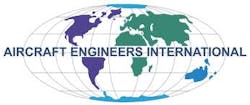Aircraft engineers call for aviation regulatory action, resolve
The AEI statement reads: “The Licensed Aircraft Maintenance Engineers directly involved in the discovery of these cracks in June 2011 have maintained from day one that the discovered cracks were a serious issue which required an immediate effective response. The initial reaction from both regulators and the aviation industry was to suggest that engineers were ‘over stating’ the situation whilst ‘experts’ had already determined that the issue was not safety related at all.
“The issue (six months after the discovery the cracks) of an effective airworthiness directive requiring operators to perform fleet wide inspections says more about regulatory failings than it does about the cracks in the A380 wings. Let's be crystal clear about this, safety is no longer paramount within commercial aviation and hasn't been for some time. Regulators are becoming ever more reluctant to enforce the very regulations designed to protect citizens, in case the business model suffers. The border between regulator and business entity can no longer be readily determined whilst the primary concern appears to place the priority on a successful, viable business model rather than safety.
“Back in 2010, for example, an Australian court decided in favor of Licensed Engineers in a dispute over the regulating of airlines and maintenance organizations under the control of CASA, the Australian national aviation authority. Engineers maintained that CASA was not performing its task as it should and requested documentation in order to prove it. The response from the Australian aviation regulator was to spend hundreds of thousands of Australian tax payers' dollars in trying to close the case down. Fortunately the judge was having none of it and ordered CASA to release the information stating that "CASA (the regulator) had failed". One would have expected that situation to become a wakeup call for other regulators but it hasn't.
“In Europe, both pilots and engineers have informed EASA about their concerns that the EU is following a dangerous route of enhanced flexibility and self regulation. As we have seen with the Euro and banking crises, enhanced flexibility and self regulation leads only to disaster. It is a strange yet known paradox that as safety levels increase over a period of time, humans very quickly forget why such measures were adopted and attempt to undo them for the sake of a few extra dollars profit.
“Industry and particularly regulators need to take heed of Earl Weener, a U.S. National Transportation Safety Board member, who recently commented that, ‘if the safety gains can be inculcated in technology, the gain will be robust. If the safety gain depends on behavior changes, the gain may well be temporary and transient. If one is successful by emphasizing the need for reducing an accident category, at some point in the future the need for all that emphasis will be deemed unnecessary, thus leading to the beginning of the cycle.’
“Airlines and maintenance organizations have consistently proven that they have short memories on a number of issues and are constantly attempting to re-invent the wheel by undermining current regulations. We wish to remind regulators that their primary task is to protect the general public and not to enhance the commercial aspect by relaxing effective regulations.”
